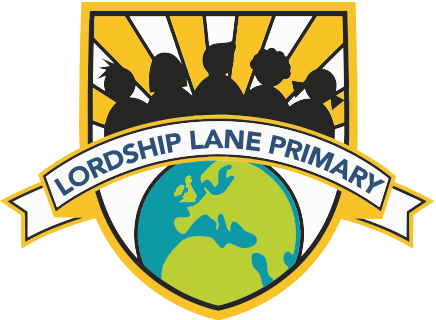Spanish
Spanish at Lordship Lane
Aims
At Lordship Lane, our Spanish curriculum has two broad aims. Firstly, we aim to build children's fluency in Spanish by giving them the key vocabulary and grammatical structures they need to express themselves clearly in Spanish. Secondly, we aim to develop in children an interest and curiosity in foreign cultures that will, in turn, contribute to their growth as tolerant, accepting citizens.
Cultural Capital
The development of cultural capital is key to the future success of our students. Through learning a foreign language, we foster perseverance, tolerance and respect towards each other within our diverse local community.
Learning a language reinforces and expands the cultural capital of all learners. At Lordship Lane Primary school our students learn Spanish with the support of paintings by Pablo Picasso or Joan Miró, we listen to different music from around the world and express our opinions about it, we read and rewrite popular children’s stories, we explore where in the world Spanish is spoken and where different celebrations and festivities take place within Hispanic culture. We aim to widen and enrich the cultural horizon of our students.
Curriculum
Our Spanish curriculum is based on that designed by Rachel Hawkes, adapted to meet the needs of our school. This curriculum meets or exceeds the requirements of the National Curriculum. Most notably, we have chosen to begin teaching Spanish in year 1 (instead of year 3, as required by the National Curriculum) as we believe starting foreign languages when children are young ensures the highest chance of success.
In key stage 1, children learn essential everyday phrases in addition to a focus on nouns and adjectives. In key stage 2, children study more Spanish grammar and increase the range of constructions that they are able to use.
Spanish Teaching
Children in key stages 1 and 2 receive one lesson a week of Spanish. Importantly, this is taught by a native speaker and specialist teacher of Spanish. Lessons with younger children make extensive use of games and songs so that children have the chance to practise the vocabulary they are learning. In older classes, lessons may also link to aspects of the culture of Spanish-speaking countries.
Overview
The table below offers a very broad overview of the themes that children study in Spanish lessons. Note that some themes are repeated. This repetition (i) allows children to consolidate the vocabulary they have learnt and (ii) allows for known vocabulary to be used for the teaching of new grammatical constructions.
|
Y |
Autumn 1 |
Autumn 2 |
Spring 1 |
Spring 2 |
Summer 1 |
Summer 2 |
|
1 |
Greetings, phonics, numbers 1-12 |
Greetings, colours, animals, stories |
Shapes, days of the week |
Body parts, numbers 1-15 |
Food, likes and dislikes, Stories |
Greetings, toys, outdoors |
|
2 |
Greetings, phonics, numbers 1-15 |
Colours, animals, stories |
Shapes, months of the year |
Body parts, numbers 1-20 |
Food, likes and dislikes, stories |
Greetings, house, toys, outdoors |
|
3 |
Greetings, phonics, numbers 1-20, colours |
Pencil case, verbs, Christmas |
Animals, colours, plurals |
Animals, nouns, articles, stories |
Food, re-telling stories, Numbers 1-31 |
Food, role plays |
|
4 |
Greetings, numbers 1-31, days of the week, months & seasons |
Dates and birthdays, Christmas |
Shapes, colours, prepositions of place |
Face & body parts, adjectives |
Family members, alphabet |
Physical descriptions |
|
5 |
Greetings, numbers 1-31, days of the week, months |
Seasons, dates and birthdays, Christmas |
Sports, use of dictionaries, likes and dislikes, verbs |
Sports, adverbs of frequency |
Family members, alphabet |
Numbers 1-50 Music |
|
6 |
Greetings Weather |
Gender agreement Cardinal points Opinions |
Spanish cities Places in town |
Places in town Describing places |
Festivities and celebrations |
Students' presentations |
